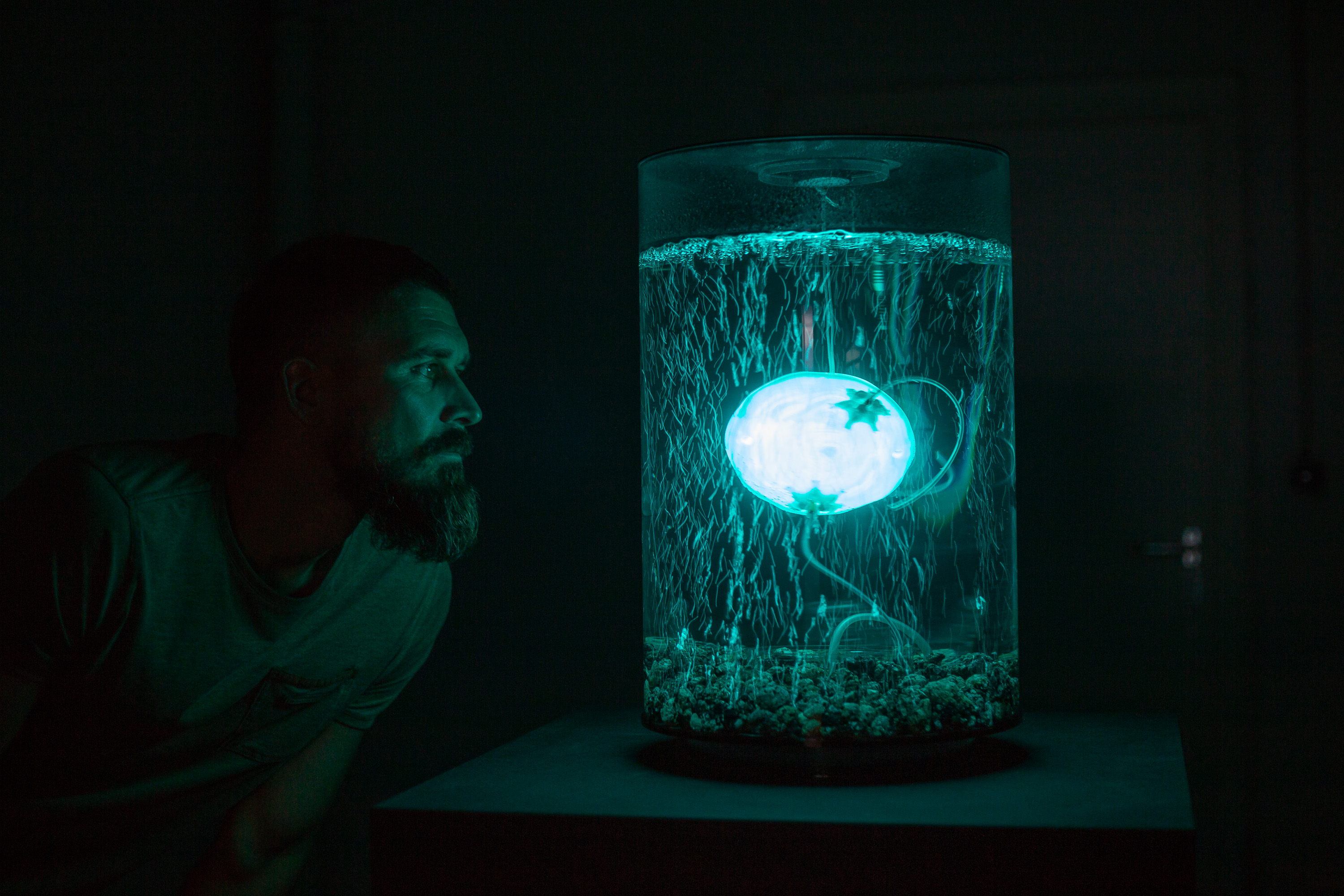Alex May and Anna Dumitriu's journal club session on their latest collaborative robotics artwork projects “ArchaeaBot” and “BioCompuation Bots”.
Anna Dumitriu and Alex May (Visiting Research Fellows: Artists in Residence in Computer Science at the University of Hertfordshire) will discuss their latest projects “ArchaeaBot” and “BioCompuation Bots” and demonstrate some of these new robotic artworks.
“ArchaeaBot: A Post Singularity and Post Climate Change Life-form” takes the form of an underwater robotic installation that explores what ‘life’ might mean in a post singularity, post climate change future. The project is based on new research about archaea (the oldest life forms on Earth) combined with machine learning & artificial intelligence to create the ‘ultimate’ species for the end of the world as we know it. The project has made in collaboration with researcher/cryomicroscopist Amanda Wilson as part of the EU FET Open H2020 funded MARA project based in the Beeby Lab at Imperial College London, and with Professor Daniel Polani from the School of Computer Science at the University of Hertfordshire. The project is supported through an EMAP/EMARE artists’ residency at LABoral Centro de Arte y Creación Industrial in Spain via funding from Creative Europe and with generous support from Arts Council England.

“BioCompuation Bots” are a brand-new series of artworks made collaboration with Professor Volker Steuber from the School of Computer Science at the University of Hertfordshire and artistically respond directly to research projects being undertaken within the university and with international collaborators in order to engage the public and international research community:
Two mouse-like quadruped robots explore research into controlling Petit Mal epilepsy using LEDs embedded in the brain that can ‘reset’ genetically modified cells before a fit occurs. In the research a complex data set was analysed to work out the perfect moment to turn on the fit stopping LED, in the artwork audiences use a blue torch to reset the robot’s ‘brains’ and ‘unfreeze’ them from their virtual fit. Also in collaboration with Dr Freek Hoebeek at Erasmus University in Rotterdam.
Another robot on tracked wheels roams around searching for smells that appeal to it and focusses on a kind of perfume designed to appeal to it. Senses such as smell are widely considered to be uniquely related to biological life and closely related to our understanding of consciousness, an assumption that this artwork throws into question. The robot explores artificial nose research being undertaken at the university with Dr Michael Schmucker.
Date: 30/11/2018
Time: 16:00
Location: D120